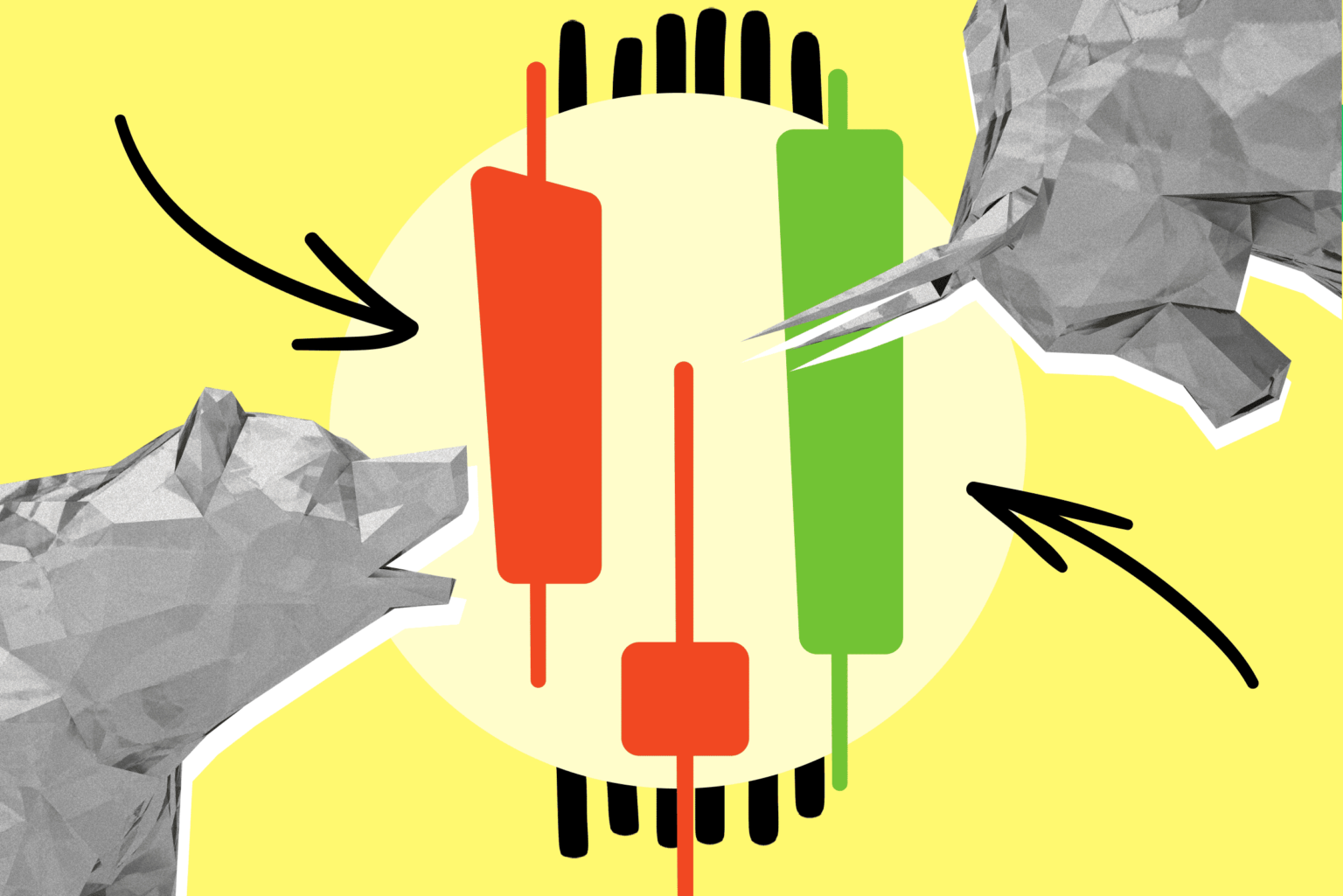intermediate
Crypto trading can be a tough task. Not only will you have to face all the challenges associated with regular trading, you will also have to battle the additional volatility present in the crypto market.
Reversal candlestick patterns are one of the principal tools that a trader can use. These patterns can help identify bullish and bearish reversals in the market and find profitable trading opportunities.
In this article, we will discuss what reversal candlestick patterns are and how you can use them in your trading strategy.
What Is a Reversal Candlestick Pattern?
A reversal candlestick pattern is a bullish or bearish reversal pattern formed by one or more candles. One can use these kinds of patterns to identify a potential reversal in assets’ prices.
Various candlestick reversal patterns exist, but not all of them are equally strong or reliable. Some of the most popular ones include the bullish engulfing pattern, the bearish engulfing pattern, the bullish harami pattern, and the bearish harami pattern.
Please note that we will be talking about candlesticks in this article. To learn more about their structure, read this article.
Bullish vs. Bearish Reversal Candles
Reversal candlestick patterns can be either bullish or bearish. Bullish reversal patterns occur when the market is in a downtrend and forms a bullish reversal pattern. Bearish reversal patterns occur when the market is in an uptrend and forms a bearish reversal pattern.
Candlestick Performance
Candlestick reversal patterns are among the most powerful bullish and bearish reversal signals in the market. Thanks to their high accuracy, these patterns can be used to trade both long and short positions.
In order to make the most of candlestick reversal patterns, you should use them in conjunction with indicators and comprehensive market and technical analysis. Don’t forget that no pattern or indicator is ever fully reliable per se.
Top Bullish Reversal Candlesticks
Although they may sometimes be unreliable, learning how to identify the top bullish patterns that can signal reversal is still an immensely important skill for any crypto trader. Let’s review some of the most commonly seen ones and learn what they can mean.
Three White Soldiers
Three white soldiers is one of the most famous three-candle reversal patterns. It is formed by three candlesticks that all have long bodies and a higher close than the previous candle. Three white soldiers all open within the body of the preceding candle. Additionally, they also have short wicks, which signifies relatively low volatility and a strong bullish trend.
The three white soldiers pattern usually comes after a downtrend and confirms that bulls have taken over the market.
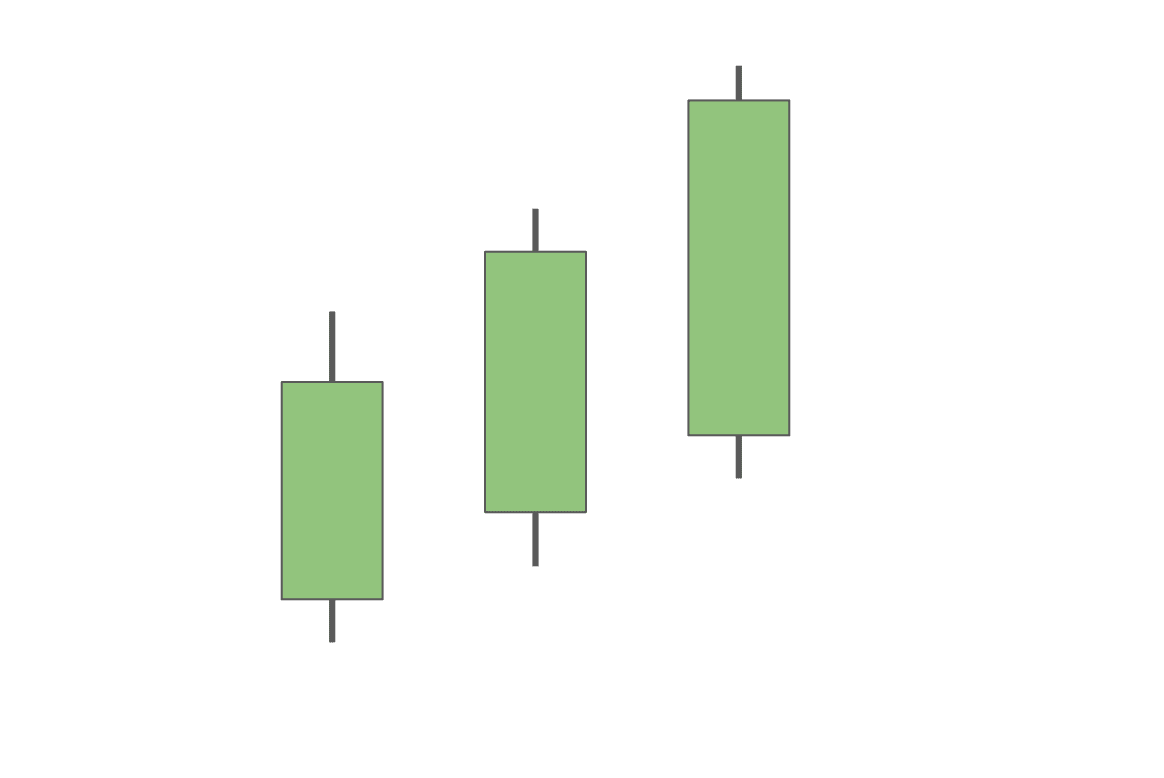
Dragonfly Doji
The dragonfly doji is a bullish reversal pattern formed when the open, the high, and the close are all equal or very close to each other. It basically has no body. Instead, it has a really long lower wick but an almost non-existent upper one.
This pattern shows that although the asset’s value briefly went down during the set time frame due to selling pressure, it opened and closed at a high price. The dragonfly doji shows that the bulls currently have the upper hand in the market, and we may see a reversal from a bearish trend to a bullish one quite soon.
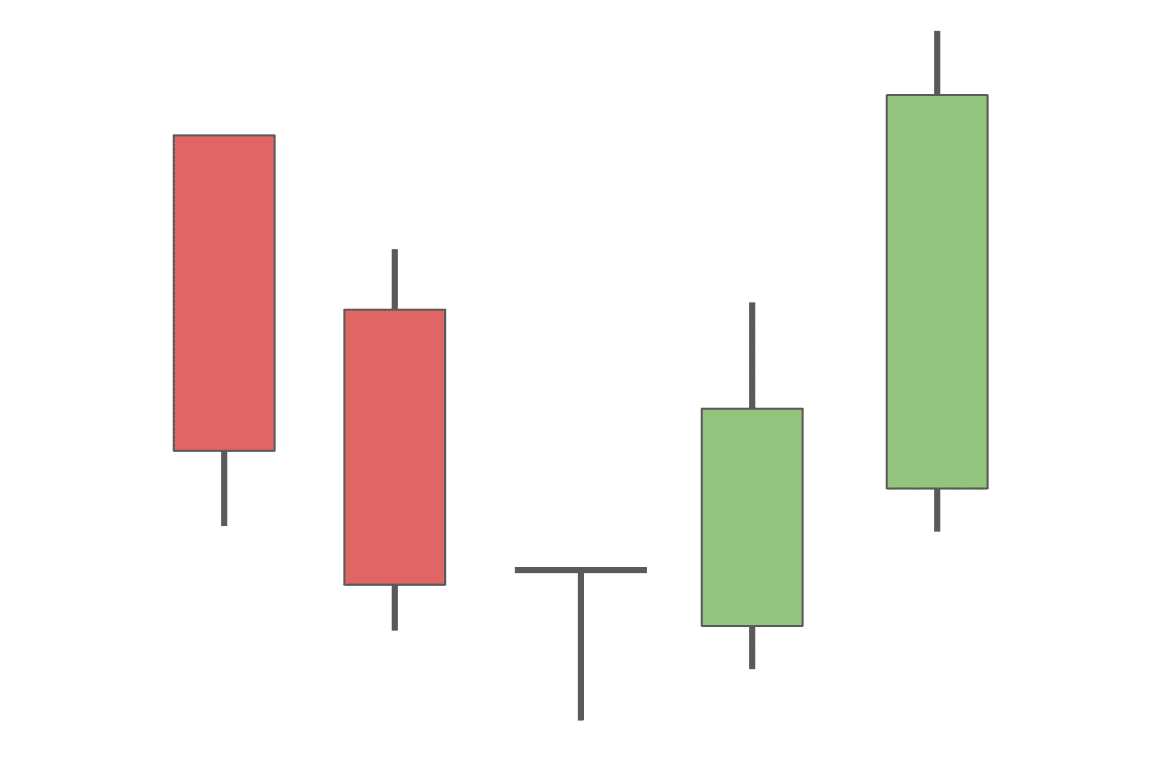
Bullish Engulfing
The bullish engulfing pattern is a rather simple pattern formed by two candlesticks. The first candlestick is bearish, and the second one is bullish. Just like the name suggests, the second candle engulfs the body of the first one.
The engulfing is considered to be one of the most powerful bullish reversal patterns as it shows that although the asset’s price touched a new low, it still managed to close above the opening of the preceding candle.
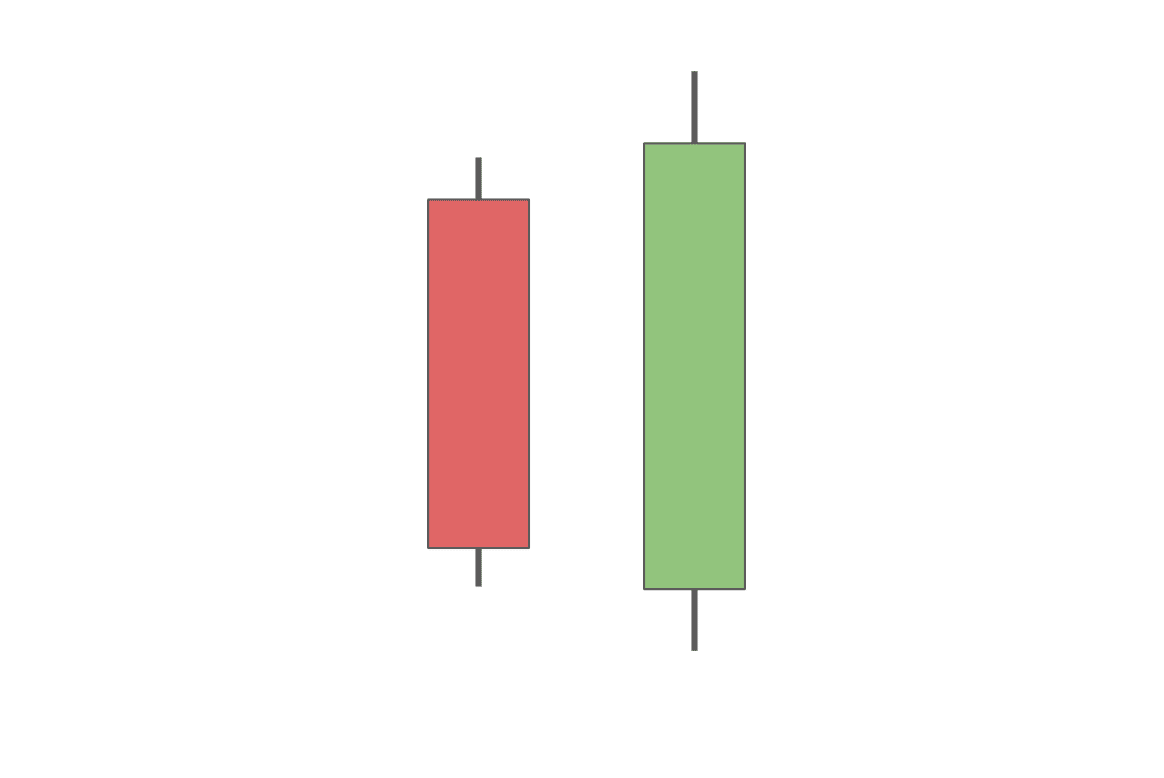
Bullish Abandoned Baby
The bullish abandoned baby is a bullish reversal pattern that consists of three candlesticks: one bearish and two bullish ones. It is really similar to the morning star but has one crucial difference. The abandoned baby — the second candle — is below the lower wicks of both the first and the third candlesticks in the pattern. Sometimes, there is more than one “baby” between the two big candles.
The small second candle shows that the selling pressure has become weaker. Its distance from the other two candles signals that selling pressure has possibly been exhausted.
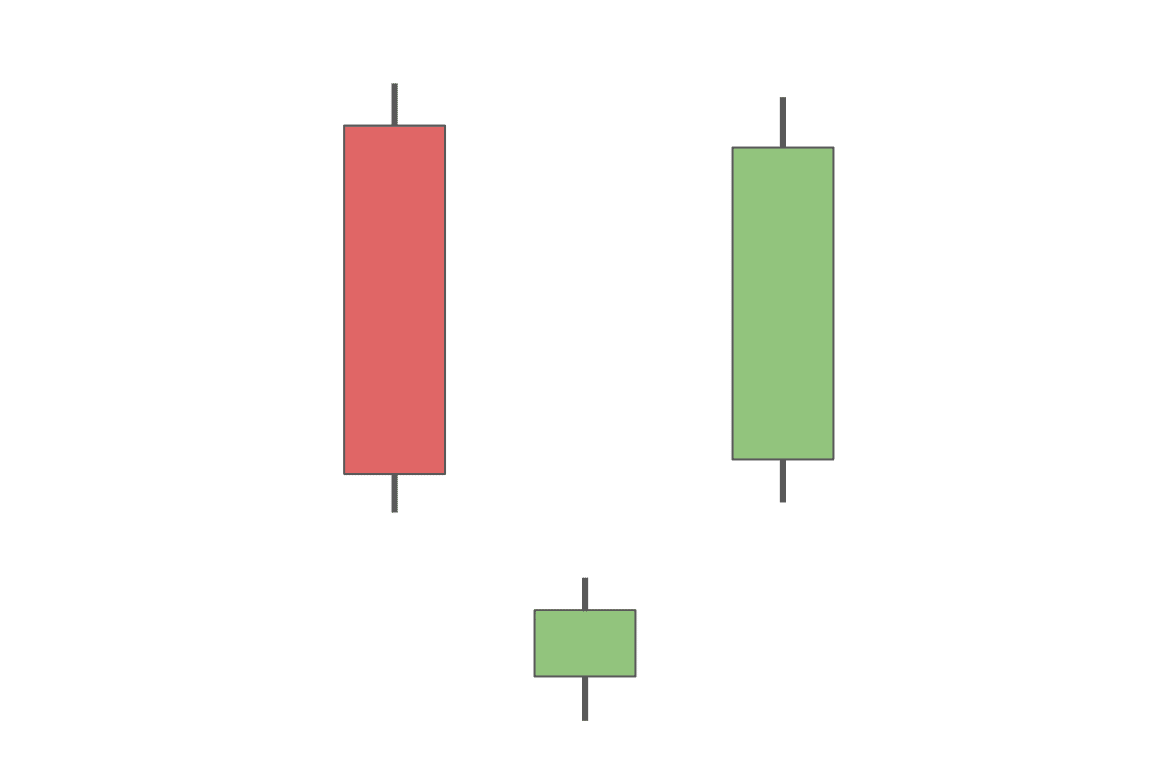
Morning Star
The morning star is a bullish reversal pattern formed by three candlesticks. The first candlestick is bearish, the second one is a small bullish or bearish candlestick, and the third one is a big bullish candle.
The second candle ends up being so small because although there is a push to a new low, there is also a rebound, which receives bullish confirmation through the third big green candle.
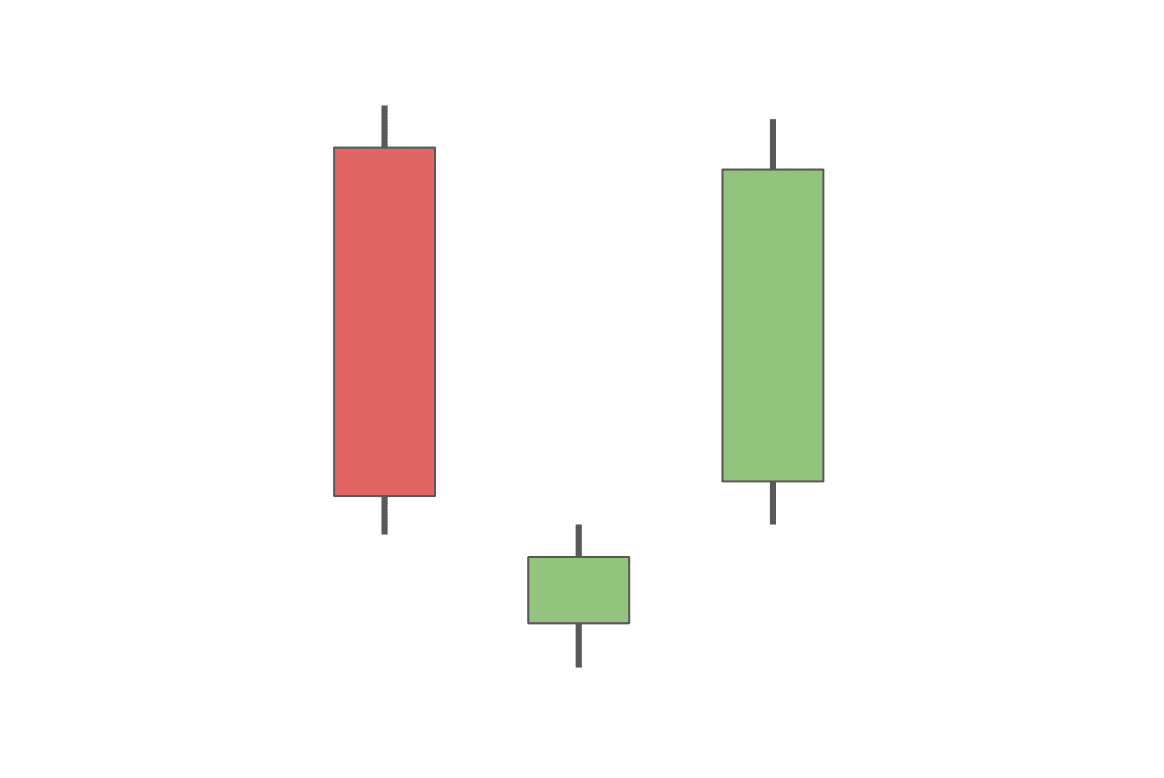
Morning Doji Star
The morning doji star is very similar to the regular morning star. The main difference is that in this case, the second candle’s body is a lot smaller — it’s a doji. Its small body signals indecisiveness in the market, while its long wicks reflect the ongoing price volatility. These two factors combined, especially alongside the other elements of the morning star pattern, signal a possible reversal.
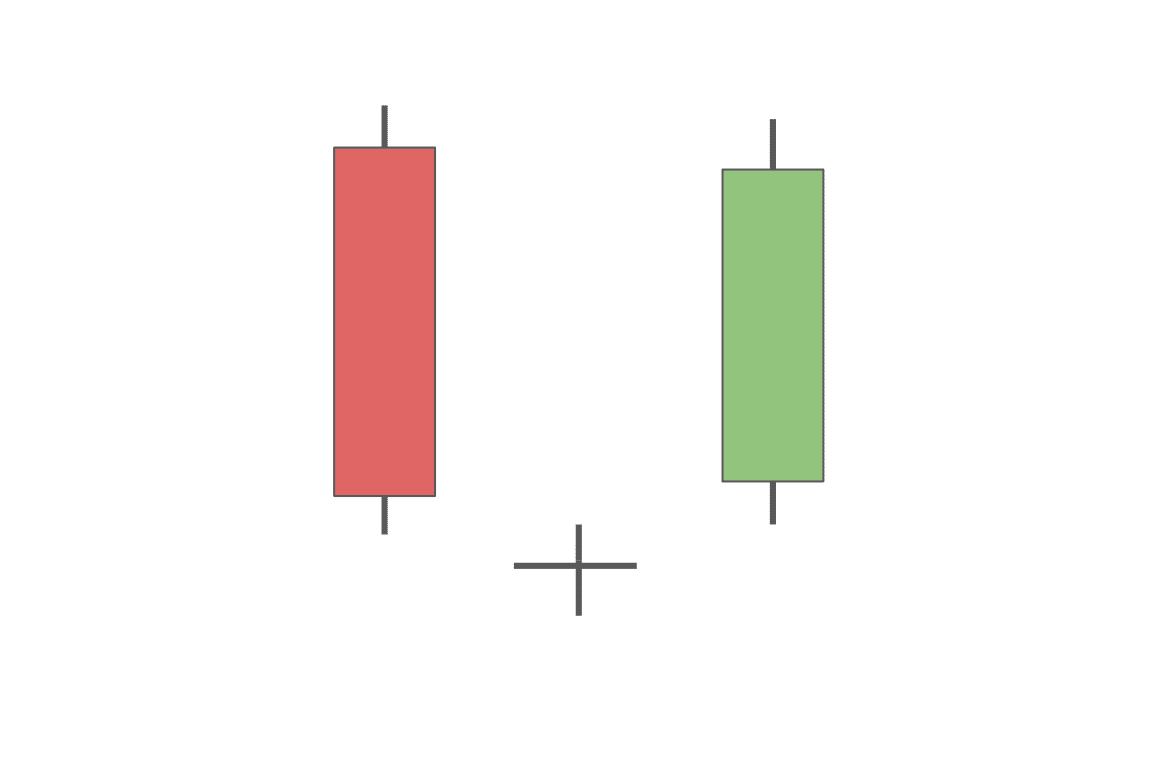
Piercing Line
The piercing line is formed by two candlesticks, a bearish and a bullish one, which both have average or large bodies and wicks of average length. The second candle’s low is always below that of the previous candle. Despite that, this bullish candlestick might signify the beginning of a rally.
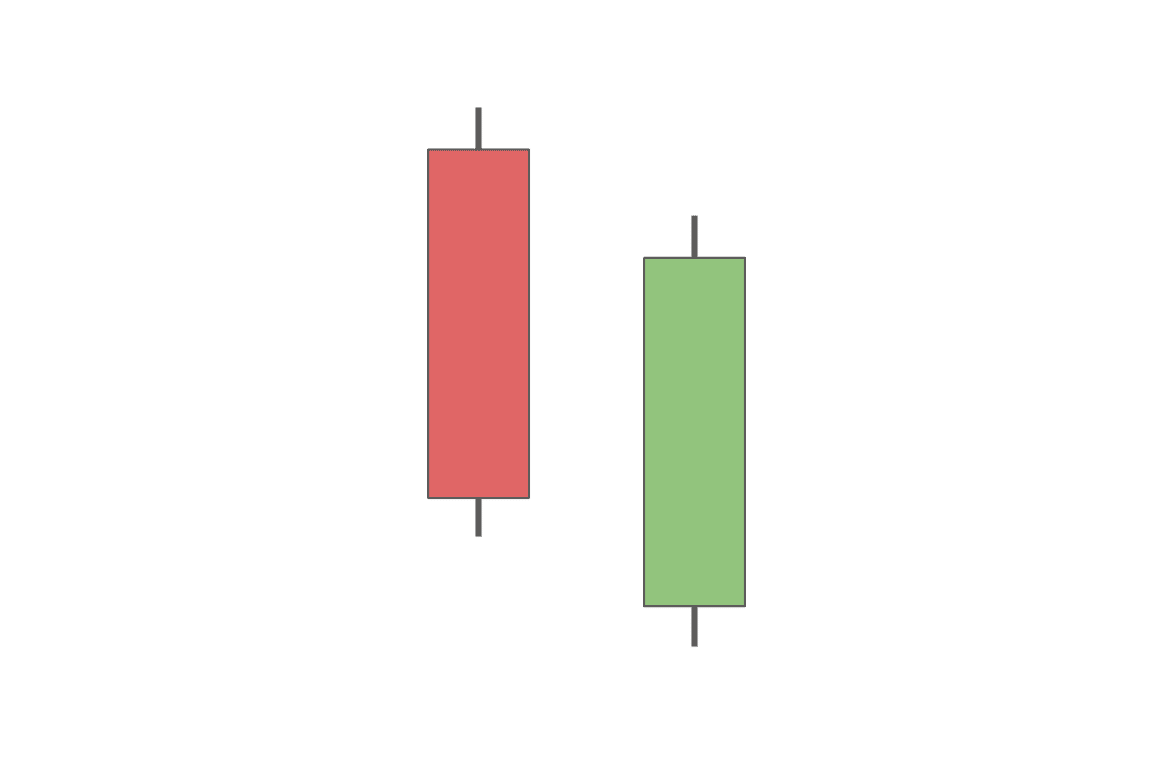
Bullish Harami
The bullish harami is formed by two candles, a bearish and a bullish one. The green candle is a lot smaller than the red one. This pattern signifies that there has possibly been a change in the market sentiment, and a rally may happen soon.
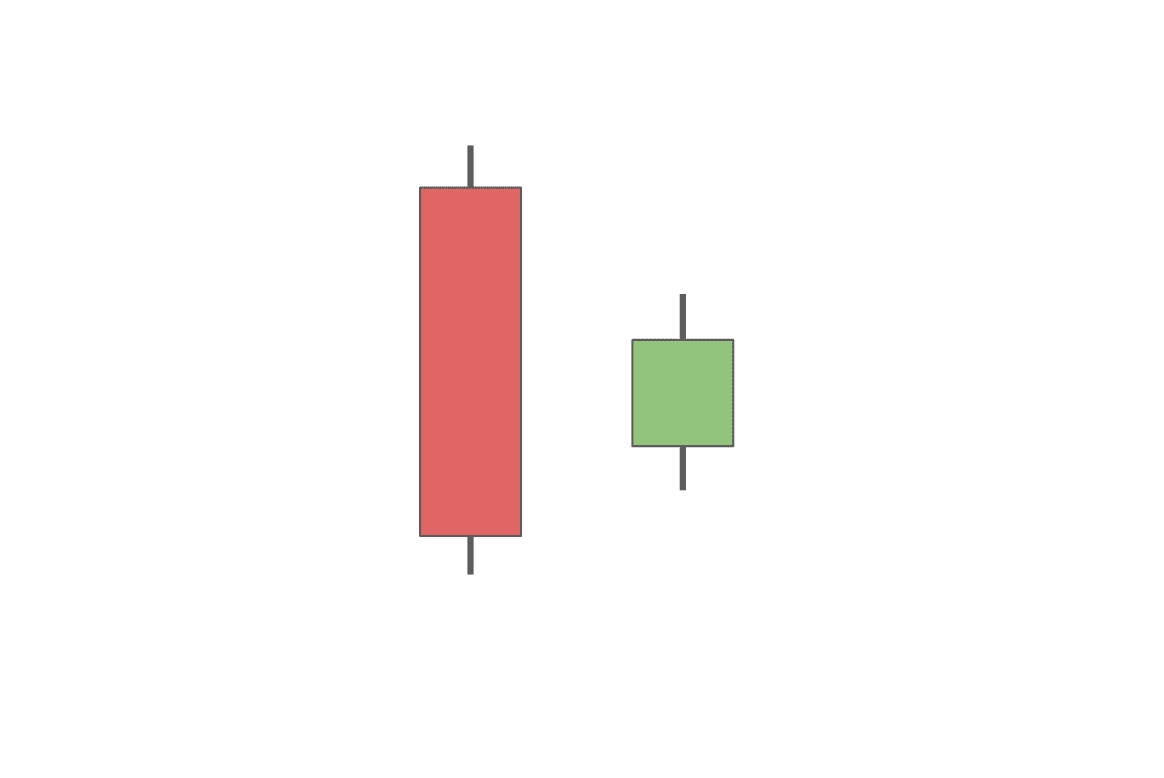
Hammer Candlestick
A hammer is one of the easiest patterns to spot: it has an easily recognizable shape and is made up of one single candlestick. This candle has a small body and a really long lower wick.
That long lower wick in conjunction with a short upper one and a body that’s on the smaller side gives a reversal signal. It shows that while the asset briefly traded really low, it managed to recover and continued being traded near its high point and above the opening.

Inverse Head and Shoulders
The inverse head and shoulders is the most complex bullish reversal pattern on this list. Made up of multiple candles, it is usually recognized by its overall shape, which resembles three inverted triangles. The first one forms the left shoulder, the second one is the head, and the third one represents the right shoulder.
First, prices go down to a new minimum, which sparks a short-lived price rise. Then, the trend reverses, and the asset’s value goes even lower, only to shoot back up again and go back down again. These two high points are called the neckline. Finally, the asset goes up one final time and usually continues rising.
The complexity of this pattern makes it stronger: because it takes longer to be completed, the rallies that come after it usually tend to be stronger.
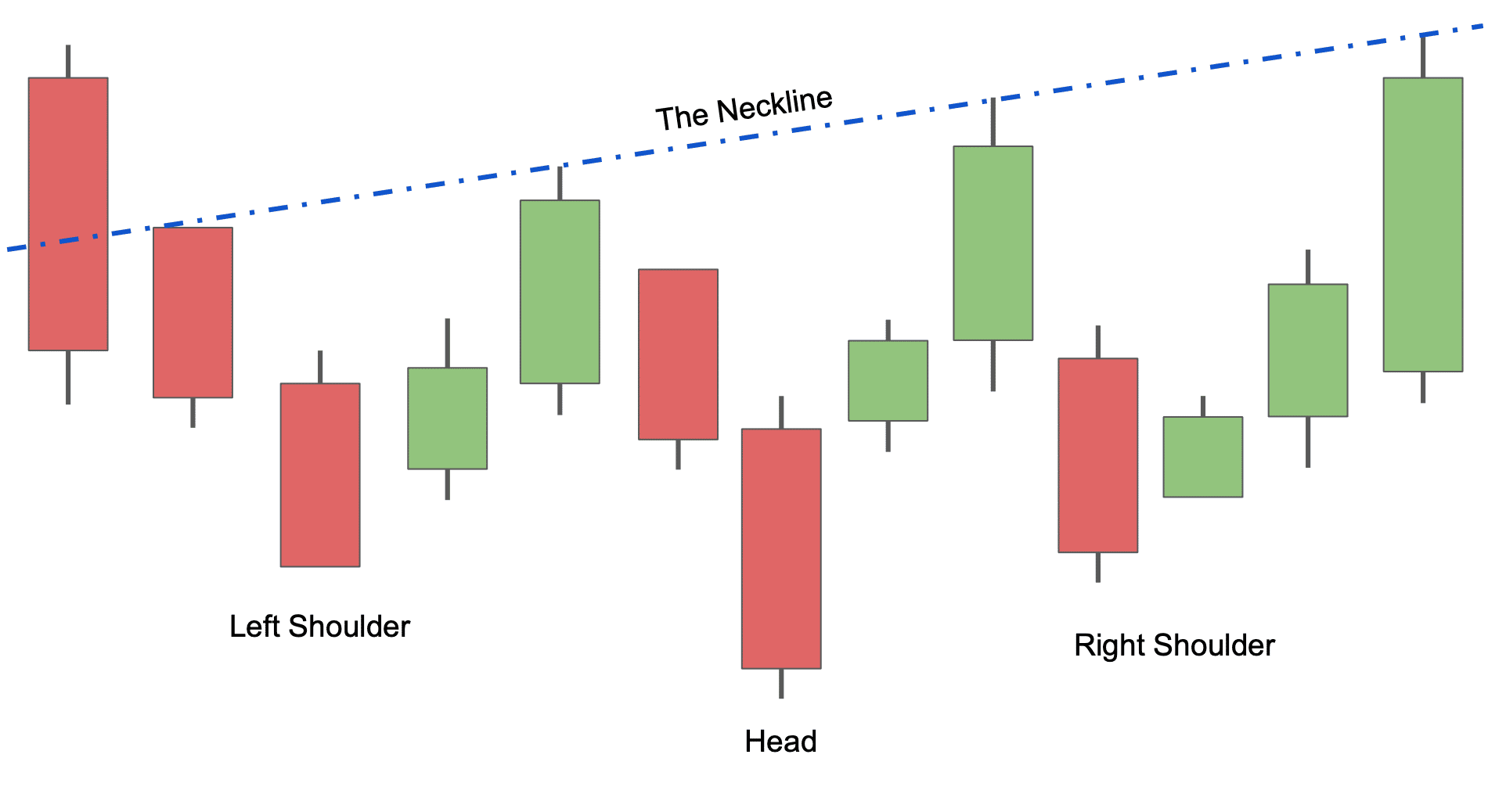
Top Bearish Reversal Candles
Now that we’ve examined bullish reversal candles, let’s take a look at some bearish reversal candles.
Three Black Crows
The three black crows is a bearish reversal pattern formed by three consecutive candlesticks with lower closes. All of them have small wicks — the opening price is generally also the highest, and the closing price is nearly the lowest.
That shows that the price continues to fall throughout the set time frame and keeps on going down within the candle. Three black crows is considered to be a really powerful bearish pattern. When preceded by a bullish trend, it signals a reversal.
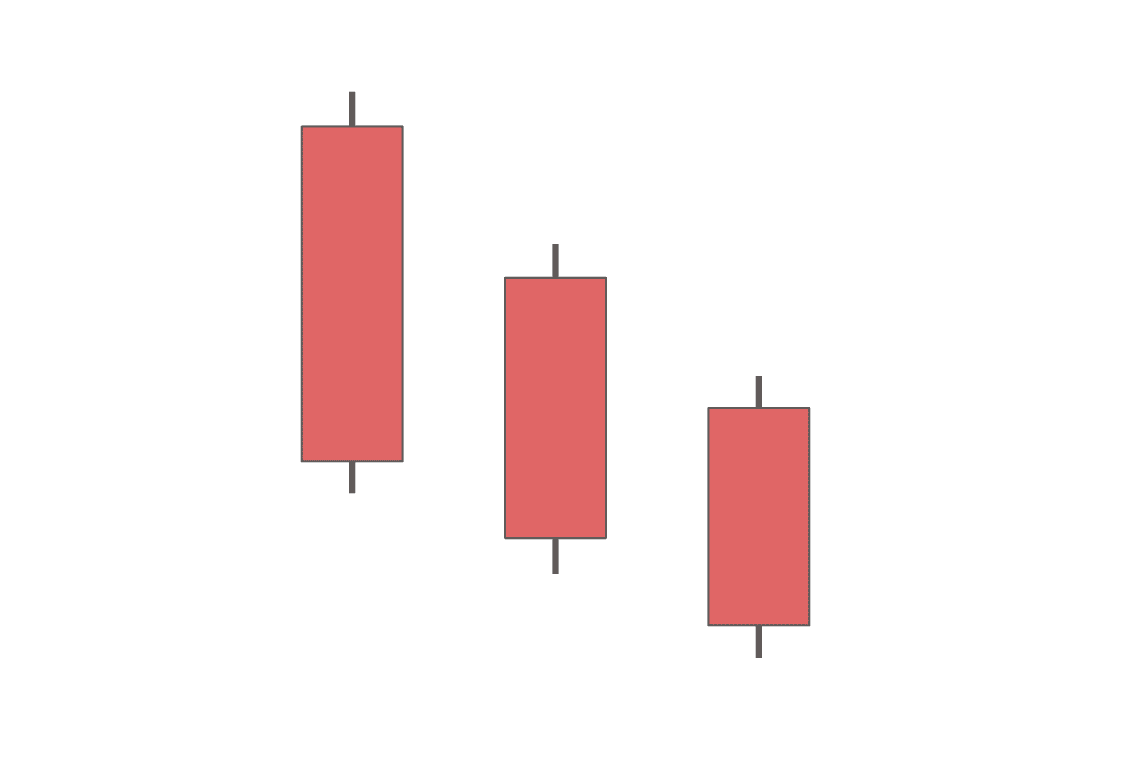
Shooting Star Candlestick
The shooting star is a bearish reversal pattern formed by one candlestick with a small body, a long upper shadow, and a short lower shadow. It usually appears after a bullish trend and signals its ending.
This candlestick’s structure shows that although a new high has been hit, the trend is starting to reverse as there is not enough buying pressure.
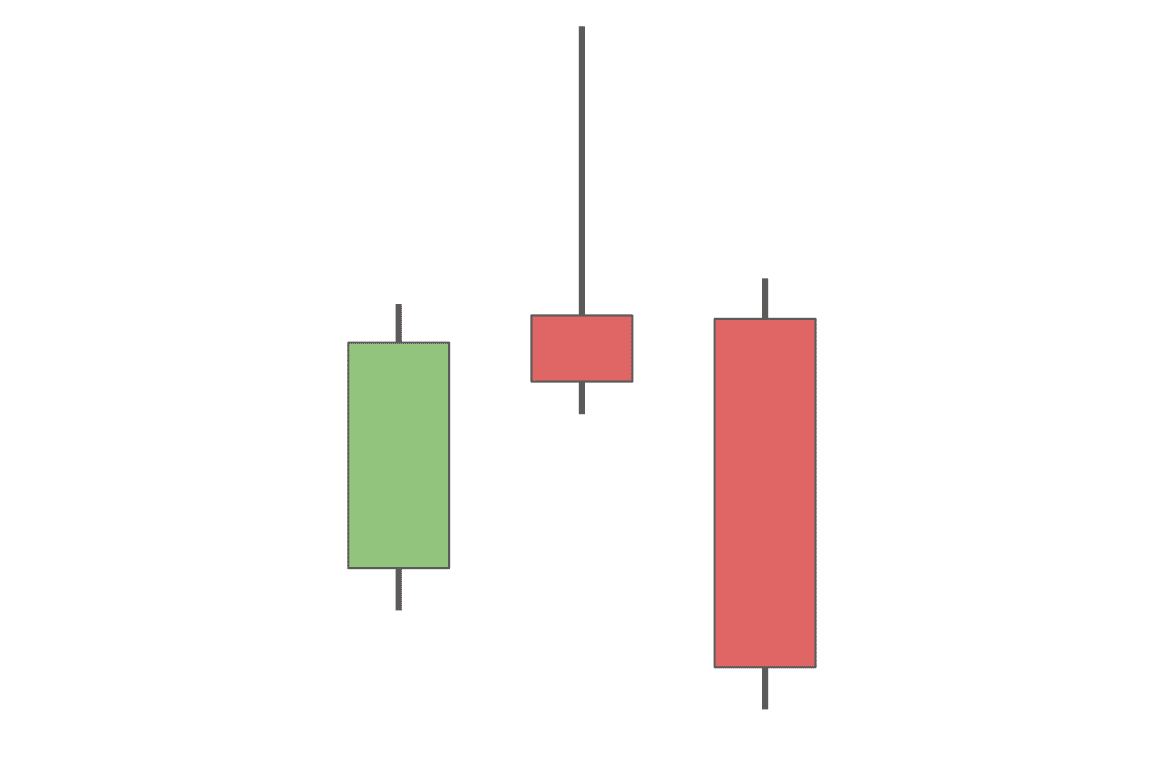
Bearish Abandoned Baby
The bearish abandoned baby is similar to its bullish counterpart but turned upside down. Just like its cousin, it is also made up of three candles, with the middle one being relatively small.
The main difference between them is that in this pattern, the second candlestick is above the other two, not below. Additionally, the first candle will be green, and the third one will turn red, as this pattern signals the end of a rally and the beginning of a downtrend.
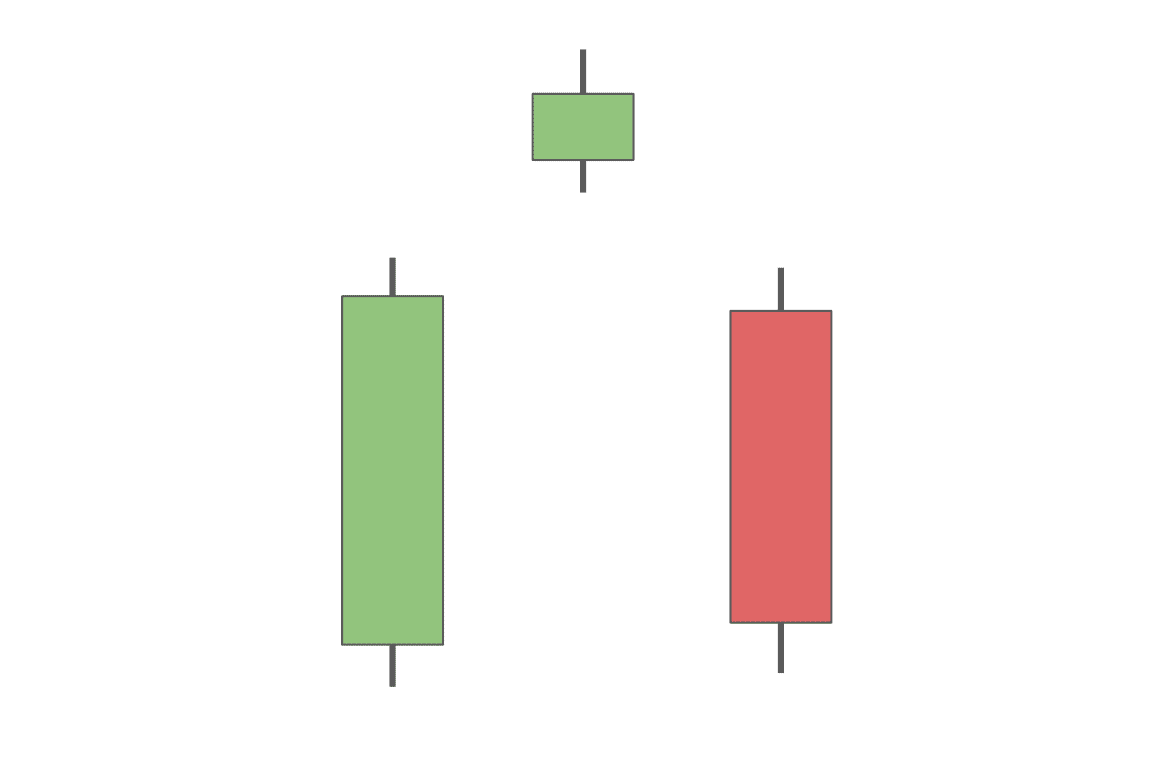
Evening Star
The evening star consists of three candlesticks. The first and the third candles both have a large body, while the middle one is rather small.
The first candlestick is bullish, and so is the second one. However, its small size shows that the rally has stalled, which is then confirmed by the third — bearish — candle. It usually signals the beginning of a downtrend.
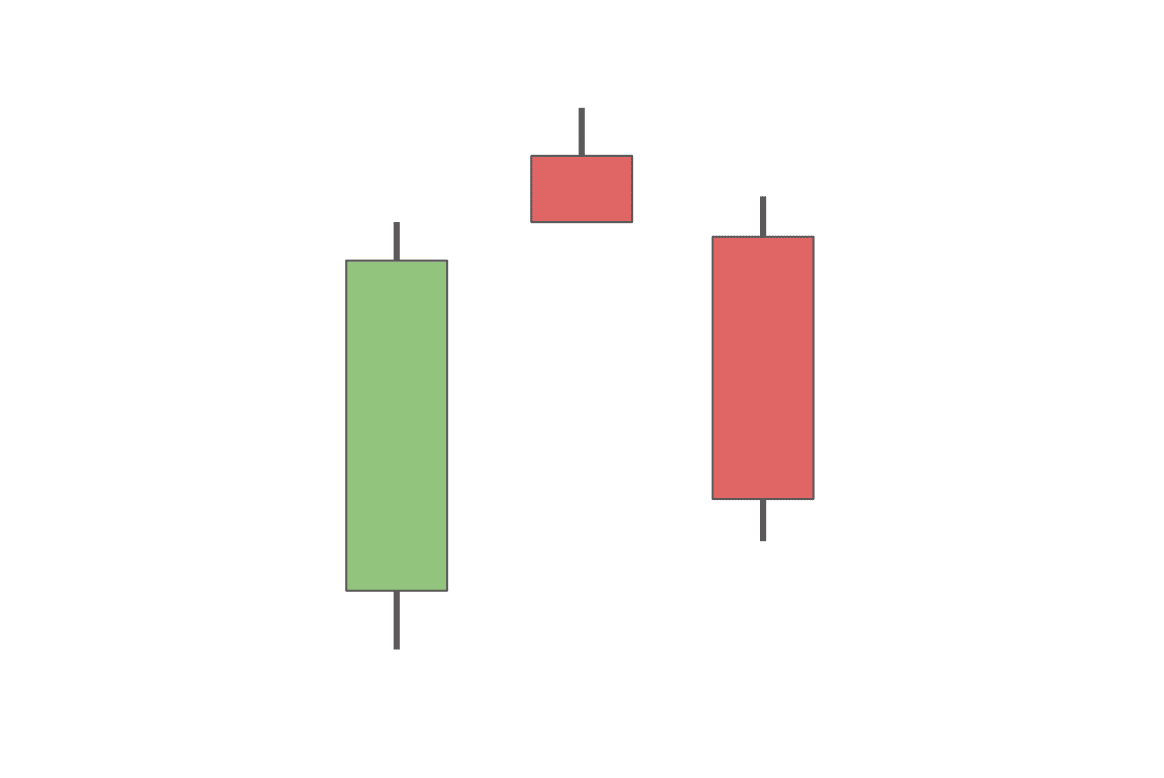
Evening Doji Star
The evening doji star is very similar to the normal evening star pattern, but its second candle is a doji with an almost non-existent body. Just like the morning doji star, it shows indecisiveness in the market, although this time, it signals a possible reversal into a bearish direction.
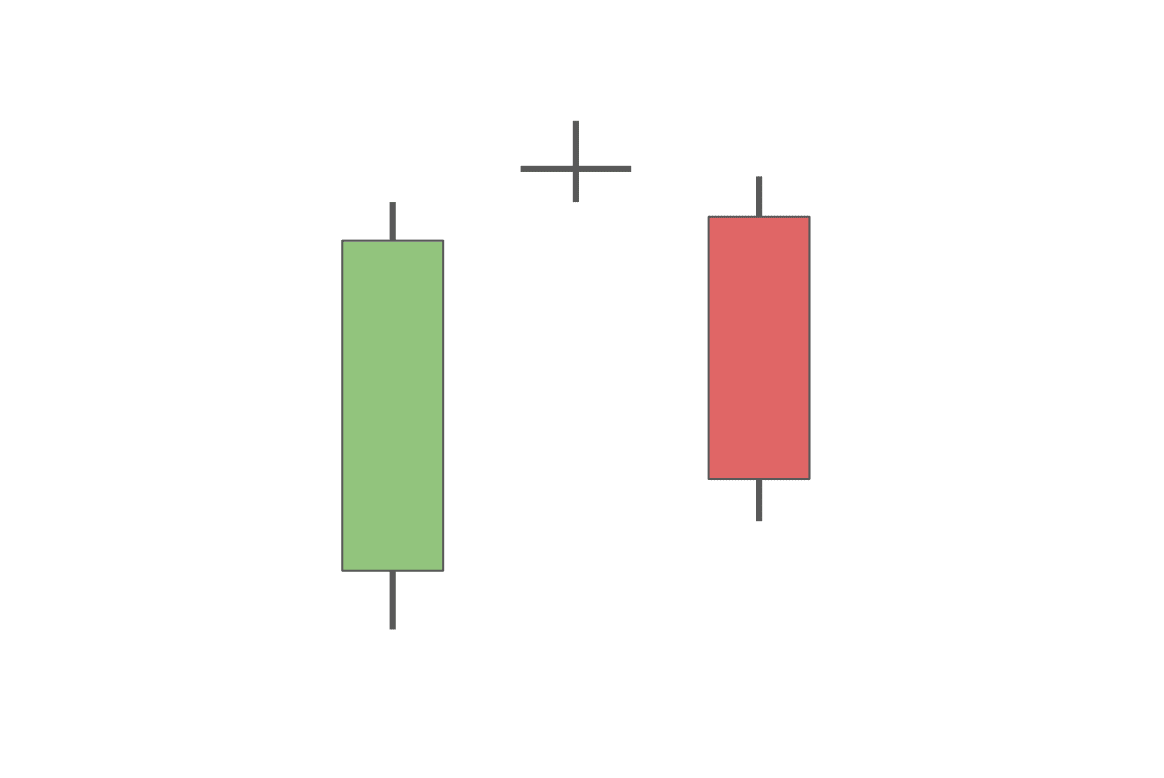
Dark Cloud Cover
The dark cloud cover is another strong pattern. It is formed by two candles, first a bullish and then a bearish one. Both of them are strong, with big bodies and average-sized wicks.
This pattern shows a situation in which the price of an asset tries to push to a new, higher position but ultimately fails and closes below its opening. It signals a bearish reversal trend.
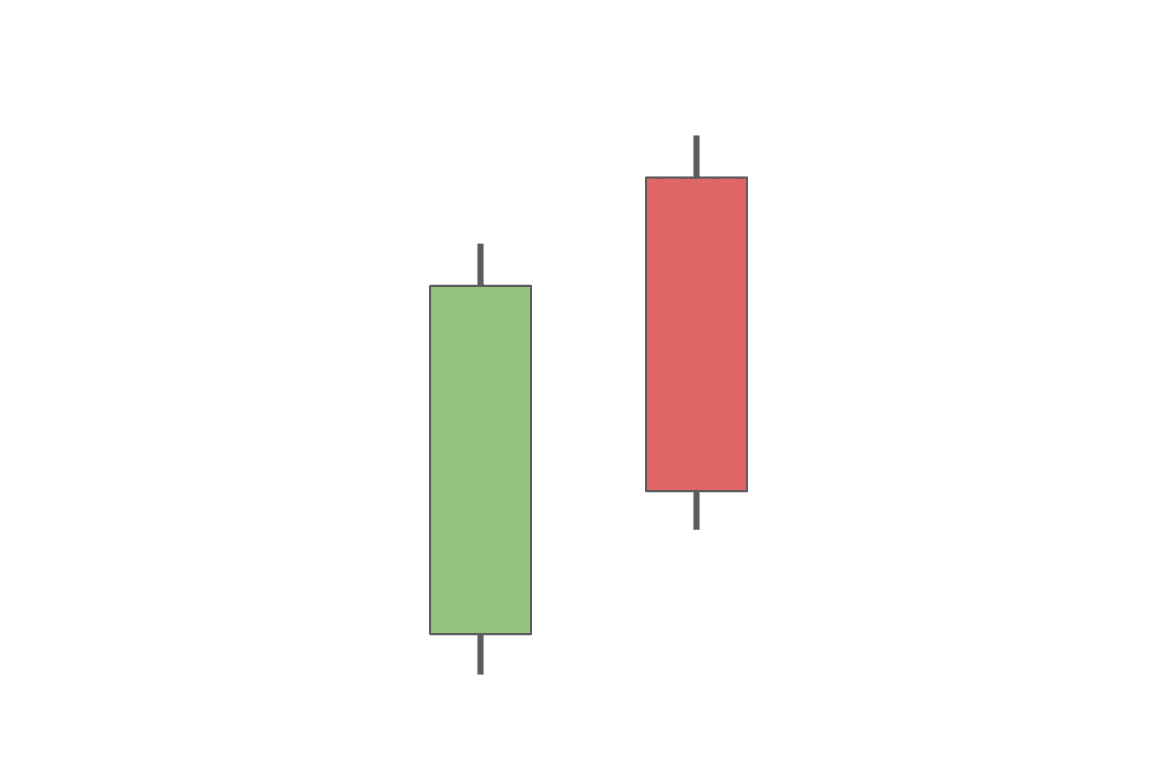
Hanging Man Candlestick
The hanging man is formed by just one candlestick. It has a small body with a short upper wick and a long lower one. Essentially, it is the same as the hammer candle. This candlestick is called a hanging man when it comes at the end of a bull run. Just like its bullish counterpart, it signals a possible price reversal.
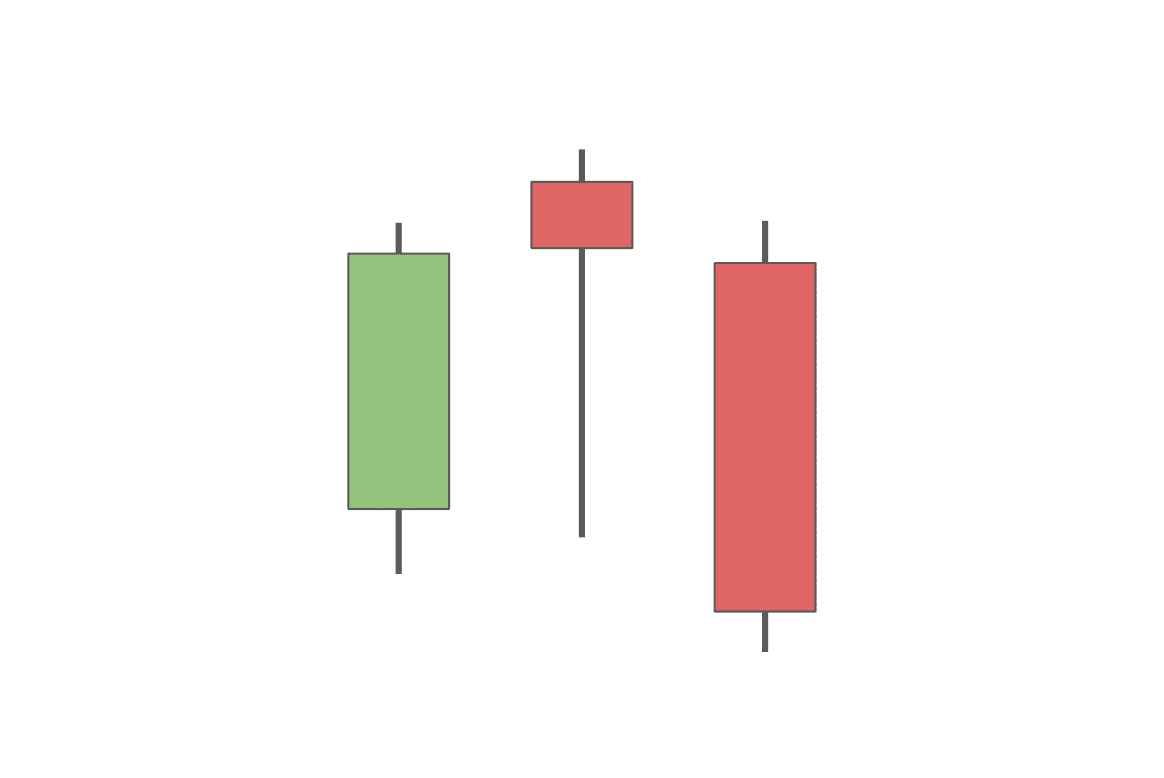
Bearish Engulfing
The bearish engulfing is the opposite of the bullish engulfing pattern. This time, it’s the bearish candle that engulfs the smaller body of the preceding bullish one. It shows that although the asset’s value briefly rallied above the highest point of the previous candlestick, it still closed below both its own opening and the opening price of the preceding candle. This usually leads to a bearish reversal.
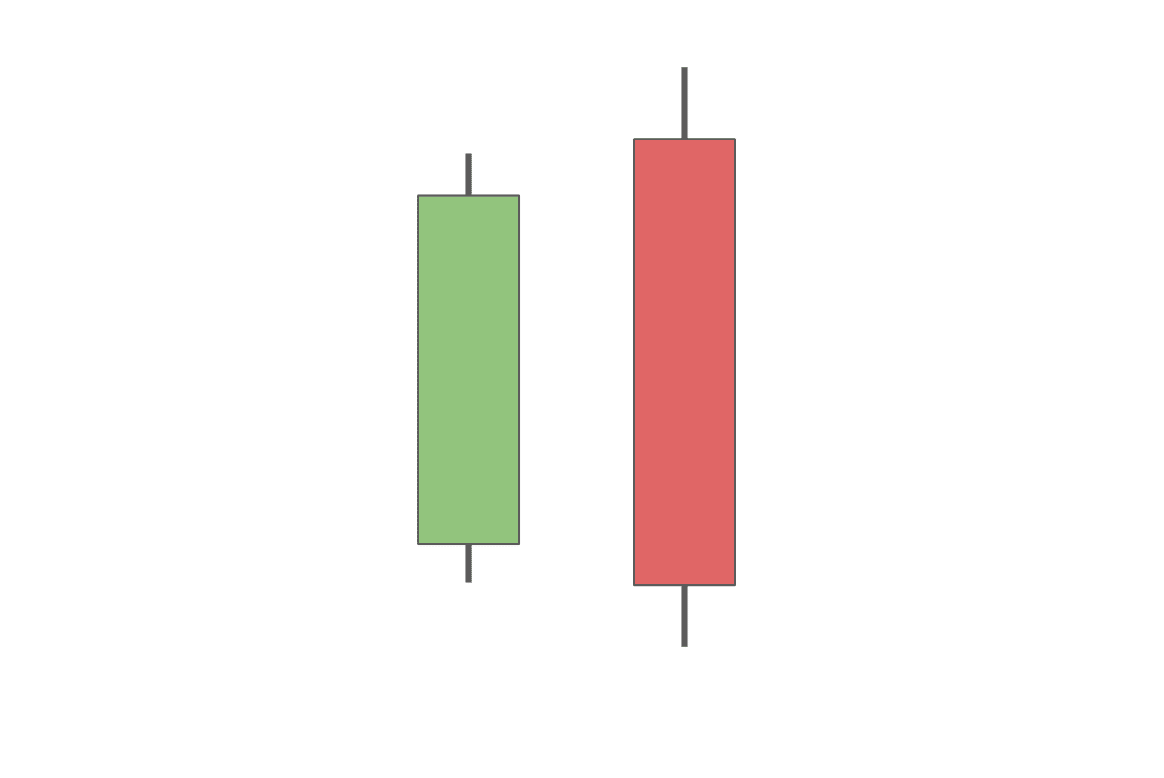
FAQ
What is the best time frame for day trading?
The 15-minute time frame is the best one for day trading. It is short enough to allow you to make quick decisions yet long enough to give you a good idea of what is going on in the market.
What is the best indicator for trend reversal?
There is no one best indicator for trend reversal. Some popular indicators that can be used to identify trend reversals are the moving average convergence divergence (MACD) indicator, the relative strength index (RSI) indicator, and the stochastic oscillator.
What’s bullish reversal strength?
The strength of a bullish reversal refers to the likelihood of the reversal actually happening.
What is a reversal candlestick pattern?
A reversal candlestick pattern is a formation that occurs on a candlestick chart indicating a potential change in the market direction. There are bullish and bearish reversal patterns.
How do you spot a reverse candle?
The best way to spot reserve candles is to memorize the most common patterns, such as the bearish and the bullish engulfing, three white soldiers, three black crows, and so on.
What is the most powerful candlestick pattern?
Some of the most powerful candlestick patterns include the bullish engulfing pattern, the morning star pattern, and the evening star pattern. These patterns tend to be more reliable than other ones.
What are bullish reversal candlestick patterns?
Bullish candlestick reversal patterns are formations that occur on a candlestick chart indicating a potential change in the market direction from bearish to bullish.
Disclaimer: Please note that the contents of this article are not financial or investing advice. The information provided in this article is the author’s opinion only and should not be considered as offering trading or investing recommendations. We do not make any warranties about the completeness, reliability and accuracy of this information. The cryptocurrency market suffers from high volatility and occasional arbitrary movements. Any investor, trader, or regular crypto users should research multiple viewpoints and be familiar with all local regulations before committing to an investment.

